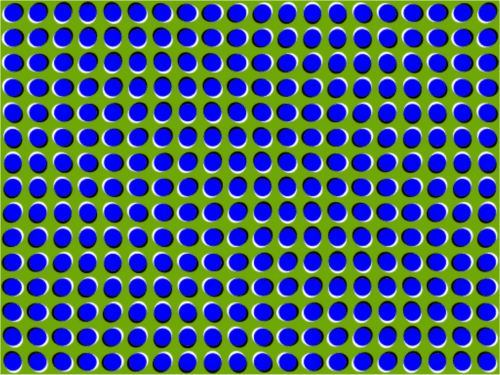
It’s no secret that we love eyes at Metro Eye. Your eyes are some of the most powerful parts of your body. They play a major role in how we learn, communicate, and make sense of the world around us. However, your eyes are not perfect and can be easily fooled. Optical illusions are fun ways to trick your eyes and make you see objects or movements that are simply not there. More specially, optical illusions take advantage of the gap between what your eyes see and how your brain makes sense of it. So lets have a little fun with three of our favorite optical illusions. Don’t worry, we’ll also explain how they work.
The Hering Illusion
In this illusion you see two bowed vertical lines, but they are actually perfectly straight and parallel! German psychologist, Ewald Hering, first discovered this simple illusion in 1861. Hering found that we misinterpret the angle at the intersection of the vertical and horizontal lines, which leads to the bowing effect.

This illusion tricks our eyes due to the small gap in time between when the light hits our retina and the time our brain perceives the light. During that tiny gap in time, our brain has the tendency make predictions of what is next, leading it to guess about the actual shape of the lines.
The Gradient Illusion

This illusion plays another cool trick on your brain! The bar in the middle looks as if it has a color gradient; in fact it is one solid color. Don’t believe it? Cover up a section of the image and your eyes will adjust to see the truth. Your brain overestimates the color of the bar in the middle, in an effort to make out the shape of the bar. The gradient background makes you think the bar is the opposite gradient in order to clearly see the shape of the bar.
Motion Illusion

We’re willing to bet you have seen this one before, but do you know how it works? There are two possible explanations for this illusion. The first is involuntary eye movements; also know as fixation jitter, which explains why the objects next to your point of focus appear to be moving. The second explanation has to do with… you guessed it, your brain. Motion detectors in your brain get confused from the image design and make the motion illusions appear.
It’s clear that your eyes aren’t perfect, which is all the more reason to take care of them. If you have questions about vision health or if you are ready for an eye exam, call us at 414-727-5888 or schedule an appointment online today!
Source: http://www.livescience.com/33664-amazing-optical-illusions-work.html
Photo Credit:
Credit: Fibonacci | Creative Commons CC BY-SA 3.0
Credit: Dodek | Creative Commons CC BY-SA 3.0
Credit: Cmglee | Creative Commons CC BY-SA 3.0

